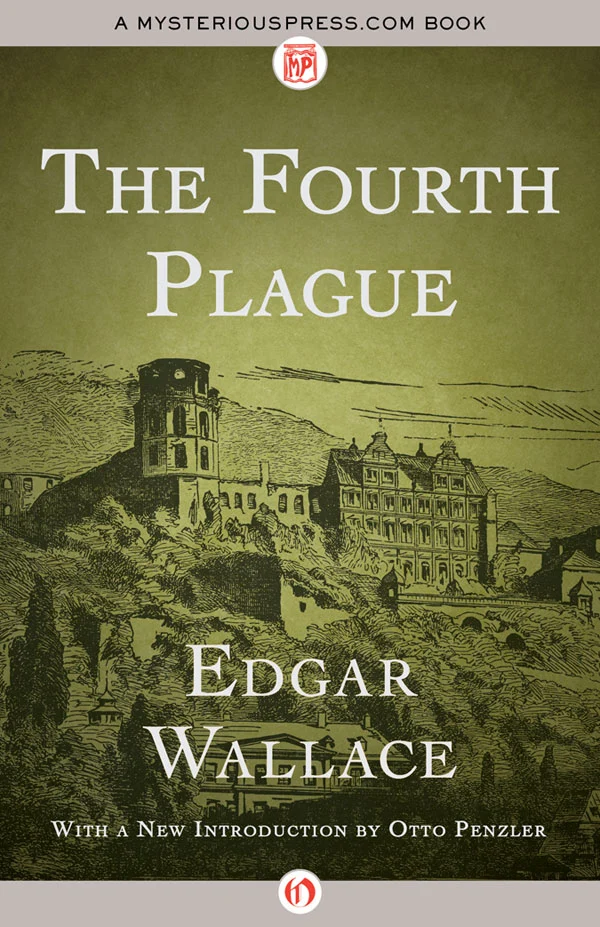The Fourth Plague


EARLY BIRD BOOKS
FRESH EBOOK DEALS, DELIVERED DAILY
BE THE FIRST TO KNOW ABOUT
FREE AND DISCOUNTED EBOOKS
NEW DEALS HATCH EVERY DAY

The Fourth Plague
Edgar Wallace

BookishMall.com.COM

Introduction
Edgar (Richard Horatio) Wallace (1875-1932) was an English novelist, prolific short story writer, dramatist, journalist—and probably the most popular thriller writer of all time.
Born in Greenwich, the illegitimate son of actress Marie (Polly) Richards and actor Richard Horatio Edgar Marriott (who appeared on the birth records as Walter Wallace), he was adopted by George Freeman at the age of nine days and raised as Dick Freeman, one of eleven children of a fish porter. He learned the truth about his parentage when he was eleven years old and needed birth papers for a job. A year later his formal education ended, and he held a series of odd jobs until he joined the Royal West Kent Regiment at eighteen, later transferring to the Medical Staff Corps. Sent to South Africa, he wrote war poems (later collected in The Mission That Failed, 1898, and other volumes) and served as a correspondent during the Boer War for Reuters and South African and London newspapers. In 1900 he returned to England and the following year married Ivy Caldecott; they were divorced in 1918, after having four children: Eleanor (who died as a child), Bryan, who was also a writer, Patricia, and Michael. Wallace married “Jim,” his secretary, in 1921; they had a daughter, Penelope.
Since publishers lacked faith in his work, he founded the Tallis Press and published The Four Just Men, his first mystery and best-known work, in 1905. A vast advertising campaign and a unique publicity gimmick—a £500 reward was offered to any reader who could guess how the murder of the British Foreign Secretary was committed—resulted in enormous sales and great financial losses, for there were several correct solutions and everyone had to be paid. In this tale, four (actually three, since one died before the series began) wealthy dilettantes find pleasure in administering justice when the law is unable, or unwilling, to do so. Wallace wrote sequels to The Four Just Men: The Council of Justice (1908); The Just Men of Cordova (1917); The Law of the Four Just Men (1921; U.S. title: Again the Three Just Men, 1933); The Three Just Men (1925); and Again the Three Just Men (1928; U.S. title: The Law of the Three Just Men, 1931).
By 1920 Wallace was writing at a prodigious pace, ultimately producing 173 books (more than half involving crime and mystery) and 17 plays. He once dictated an entire novel during a single weekend; on another occasion he plotted six books simultaneously; and he dictated serials at such a furious pace that he never knew what would happen in the ensuing chapters. His output was matched by his popularity. It has often been stated that, in the 1920s and 1930s, one of every four books read in England was written by Wallace, the “King of Thrillers.”
This immense popularity earned Wallace a fortune. During the last decade of his life he earned a quarter of a million dollars a year; yet, because of his extravagant life-style, he left enormous debts when he died. He often lost $500 or more a day at the racetrack, but his lack of success at picking horses did not diminish his enthusiasm for the sport. He was a longtime racing editor for newspapers and wrote several books with racing themes and backgrounds. Motion pictures and television programs based on Wallace’s stories are everywhere.
As might be expected of such prolificacy, much of the writing is slapdash and cliché-ridden, characterization is two-dimensional, and situations are frequently trite, relying on intuition, coincidence, and much pointless, confusing movement to convey a sense of action. The heroes and villains are clearly labeled, and the stock characters—humorous servants, baffled policemen, breathless heroines—could be interchanged from one book to another. The dialogue is convincing, however, with strong elements of comedy at appropriate times, and suspense is effectively created.
One of the best—and rarest—Wallace books is The Tomb of Ts’in (1916), actually little more than a revised version of his Captain Tatham of Tatham Island (1909), which was slightly revised in a different way for another publisher in 1916 and issued as The Island of Galloping Gold. The main character of The Man Who Bought London (1915), Kerry King, is an American millionaire who plans a revolution and forms a gigantic syndicate to buy houses and shops in London as part of his scheme. The Green Archer (1923) is a famous story about a man found murdered after having quarreled with the owner of a ghost-haunted castle. The ghost is the Green Archer, and the corpse has a long green arrow in his chest. In The Crimson Circle (1922) Derrick Yale, “the amazing psychometrical detective,” is pitted against Scotland Yard.
Other popular Wallace characters include Sanders, the commissioner who maintains law and order for the crown in South Africa, assisted by his drawling lieutenant, Bones (Sanders of the River, 1911, and others); Oliver Rater, a silent Scotland Yard detective (The Orator, 1928); Surefoot Smith, a CID man who hates science and loves beer, and has to deal with an eccentric millionaire in The Clue of the Silver Key (1930; U.S. title: The Silver Key); James Mortlake, “The Black,” a member of U.S. Intelligence who wears black clothing and a black mask (The Man from Morocco, 1926; U.S. title: The Black); Arthur Milton, “the Ringer,” an underworld character who, like the Four Just Men, always gets his man (The Gaunt Stranger, 1925; U.S. title: The Ringer); financier Tony Braid, known as “the Twister” because he has only one method for extricating himself from difficulties—telling the truth (The Twister, 1928); a pretty female crook who steals from people with bloated bank accounts (Four Square Jane, 1928); a shady character, called “The Squealer,” who is in on every major jewel robbery in London-if the robber will not split with him, he tells the police where the culprit can be found (The Squeaker, 1927); U.S. title: The Squealer); and the benign Mr. J.G.
1 comment